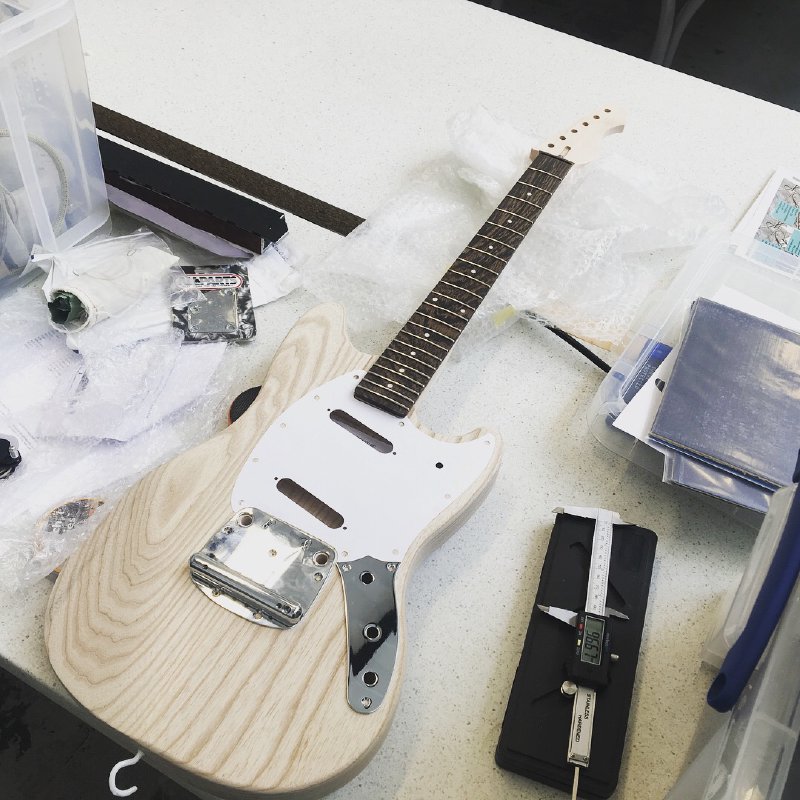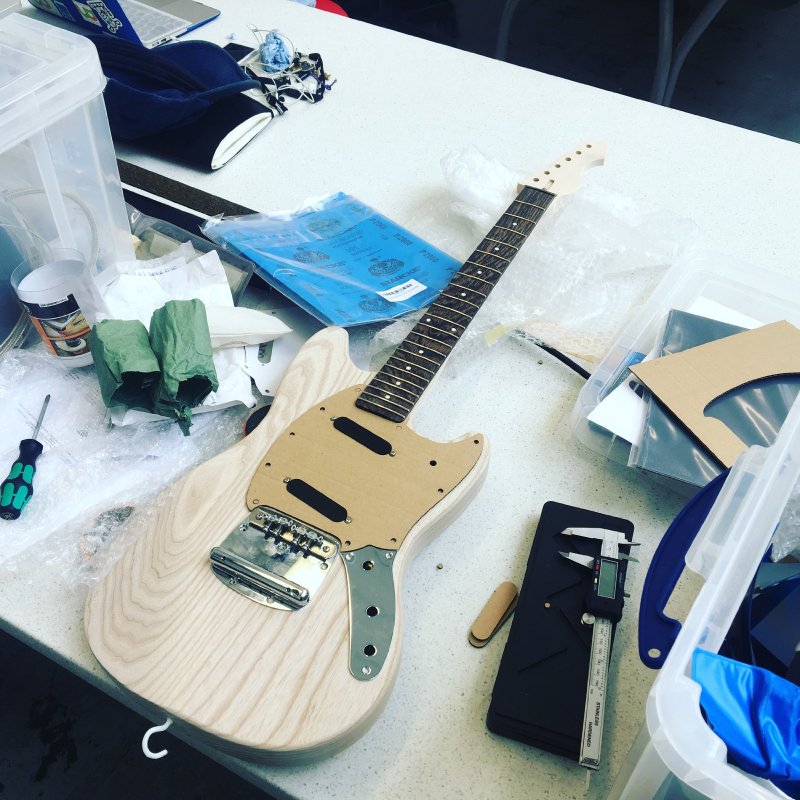A week in the shop
14 May 2018
With things still influx around the CNC router at Makespace and contracting work outside of guitar building keeping me busy again, I didn’t get much time in the workshop, except to follow up on what I wrote last week about exporting things from Fusion 360 for laser cutting.
If you read last week’s post, I’d managed to find a way to export laser cutter tool paths as DXF from Fusion into the Laser Cut software that drives the Makespace laser cutters. Whilst it seemed to work in theory, at that point I’d not put it into practice. So the main progress I made this week was putting this into practice, cutting the pick guard for the prototype offset.
As I did last week, I exported the toolpaths for my pickguard design from Fusion 360 using the Universal Laser DXF process I’d found and copied them onto the workshop PCs that control the laser cutter, and did a trial run just cutting on A4 paper. Here’s a nice video of that in action:
The end result worked quite well, fitting the guitar body nicely:

This was a bit of a relief. I was concerned about how well the bridge and the control plate would mesh up in situ; given both are heavily curved I’d only been able to model them approximately in Fusion, and I was concerned they might not fit well. But that was undue concern, as everything sits together nicely.
However, it wasn’t quite perfect, as the pickups I’d modelled in Fusion were based on random strat pickup measurements I’d found on the Internet, rather than the actual pickups I got from House of Tone Pickups . So I whipped out the callipers, updated my design in Fusion, and then I did a second test cut, this time in cardboard, so I could mount the pickups if they fitted. And indeed, my second pass was spot on:

I’ve now ordered some actual pick guard material for this guitar, so I can do a proper one to actually use on the guitar.
If I was trying to be spot on like other major international guitar vendors, I’d actually mill out my pick guards, so they have a nice tapered edge. My plan is just to round them over slightly with a light sanding; we’ll see how well that goes. Whilst I do have access to a mill, it’s a lot slower to use than the laser cutter, and I’d like to try do some laser etching on future pick guards potentially, so I’m keen to keep my workflow like this for now.
Whilst all this doesn’t seem that exciting, given that pick guards are readily available for most existing guitar designs, this for me is quite liberating. Until now I’ve been stuck with pick guard designs I can buy, but for the commissions I have at the moment I and to do variations on this offset design that I can’t readily buy, and in the future I’d like to be doing my own designs from scratch. So for me this is quite a step forward towards that goal.
Beyond the pick guard, I’ve just been doing yet more sanding on the body for this guitar, making sure I’ve got out an many fine scratches as I can. It’s a slow and tedious process, but I’ve learned the hard way that anything you miss here will show up very quickly the moment you start to stain the body. Hopefully it’s now ready for that, but the neck needs a good going over again with all the grits before it’s ready for oiling.
The only other thing is to remind people that I’ll have a stand at Liverpool Makefest 2018 at the end of June, talking about how to build guitars. Tickets are now on sale now for the event: they’re free, and whilst you don’t need to get them in advance, it does help the organisers predict how many people will be coming and organise accordingly. I hope to see some of you there!